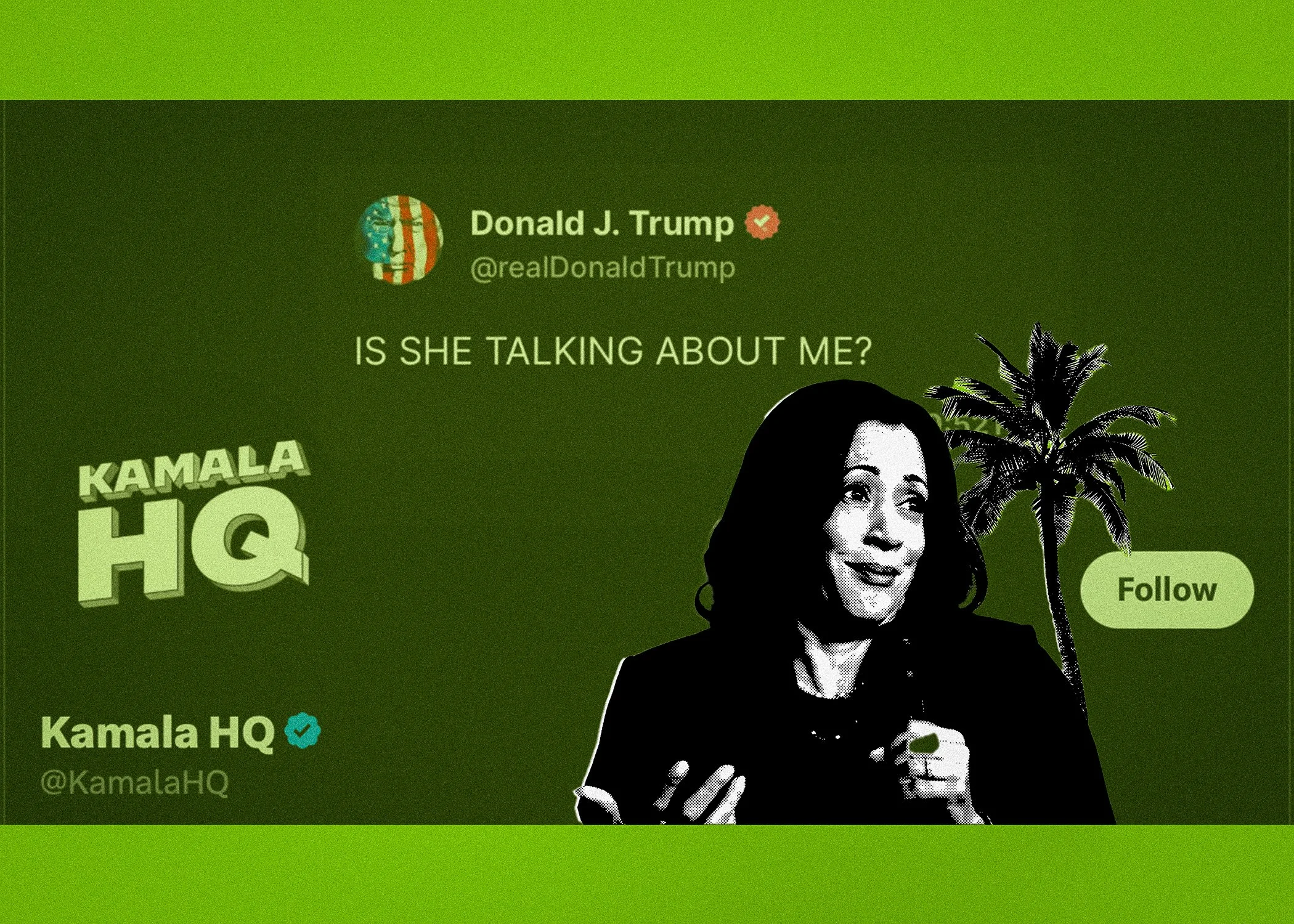How social media marketing is playing a role in this year’s presidential election
Photo Collage by Emily Paris, Photo Editor
On July 21, President Joe Biden announced his intention to withdraw from the 2024 election.
And on July 25, the “Demobrat” party was born — an unconventional campaign style pioneered by Kamala Harris’ marketing team. The “Kamala HQ” profile across several platforms first launched with the same bright lime green background and simple black font of Charli XCX’s early summer release, “Brat.”
This is the first time that Gen Z has been the direct target of election marketing, and it has earned the campaign lots of attention from the media and from content consumers. The Kamala HQ TikTok account has amassed over 127 million total likes on its page.
Sophomore film and television production major Noah Varman, who attended the Democratic National Convention this summer as a digital producer and editor, noticed the ways that the convention organizers adjusted their typical techniques to aim for a younger demographic.
“This was the first democratic convention — or first political convention at all — that gave creators and younger people that aren’t a part of the press, but are influencers, the same access that the press has,” noted Varman.
Inviting content creators to the DNC is a campaign strategy never before utilized by either major party, as Varman pointed out. The convention hosted over 200 of these creators coming from various content spaces.
“(The democratic party) specifically targeted creators that aren’t necessarily in politics, because they want to say that politics is for everyone,” said Varman. “And that people should go out and vote, they should get more involved, because it’s the normal people that they’re trying to reach.”
Varman compared the Democratic Party’s unique marketing to strategies used by the Republican Party.
“(The Republican National Convention) did not have that kind of influencer reach,” continued Varman. “They specifically just kept transitional press. And I think both parties are going to need to tap into that market because that’s the future, and that’s who’s voting right now.”
Junior economics and public relations, advertising and entertainment marketing double major Isaac Persky further discussed how Kamala Harris’ social media marketing could benefit her campaign.
“I think it’s very clear that they’ve tapped into the Gen Z market a lot,” said Persky. “I know influencers who have been invited out — even just medium-sized influencers — to rallies when it’s in their hometown or home state, because they want that press.”
He also commented on how this campaign style could end poorly for the party.
“It is interesting to see how it plays out, because it could go bad. They could post the wrong thing,” said Persky. “I’m not sure that this will work in every election, but it works now.”
Persky considered the fact that the social media algorithm leans in whatever direction the app’s user is. If viewers interact more with one party’s content, they will be more likely to only be shown content that is related.
“I think a lot of us are in a bubble on social media,” he stated. “So, I think a lot of Democrats are seeing the Kamala HQ and they think, ‘wow, this is great.’ When in reality, the Republicans aren’t seeing that.”
Both Varman and Persky believe that the new social media style of marketing is mainly effective in that it gets young people to vote.
According to the Secretary of State’s most recent Report of Registration, roughly 82% of eligible voters were registered to vote in the general election as of July 5. This is similar to the statistics from 2020 around the same time, where 83% of available voters were registered, but both years have seen considerable increases from 2016’s count of 73 percent.
As these numbers were from before the national conventions, it is presently uncertain whether the strategies have been effective in this way.
Voter turnout has generally been at its peak in recent years, with around two-thirds of eligible voters participating in the 2020 election.
Junior psychology major Caroline Kjeldgaard agrees with the idea that social media is a great tool to keep increasing voter registration.
“I think it’s good to target the younger voters, and especially to motivate the younger (eligible) voters who aren’t typically that motivated to register,” said Kjeldgaard.
She shared a similar sentiment to Persky, and noted it can be dangerous to rely on social media’s tailored algorithms for political information.
“We only really get what we agree with, so you don’t really see the other side,” she said. “So, I think people can have a really narrow view of their own beliefs.”

